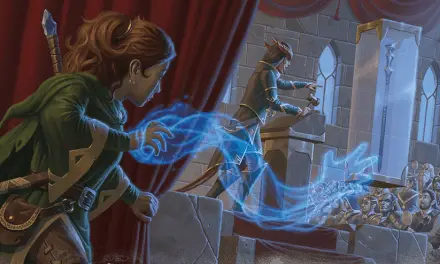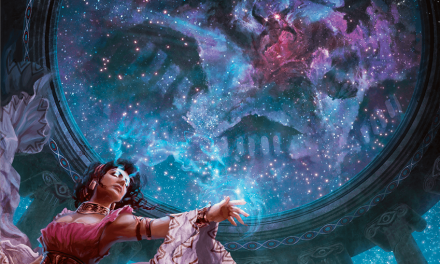If you had the chance to cheat death, would you?
As you probably gathered from the name, the Undying Warlock in D&D 5e has done just that. Or, at least, they’re hoping to!
By making a pact with a Patron who has found the secret the eternal life, these Warlocks hope to prove worthy of that knowledge themselves.
In the service of their Patron, these Warlocks blur the line between the worlds of the living and dead. Though they are at peace among the dead, they are still alive. However, as time goes on the definition of “alive” might not entirely apply as they reach higher levels…
If freedom from the grave is what your character desires, read on!
This is the full guide to the Undying Warlock in D&D 5e!
What is the Undying Warlock in D&D 5e?
The Undying Warlock has made a deal with some powerful entity that has unlocked the secret to eternal life. Of course, such things often come at an equally great price…
A Warlock who chooses this patron likely wishes to learn these secrets as well. Through diligent service to their patron, the Warlock hopes to one day be deemed worthy of being free from the fear of death.
With eternal life, what couldn’t they accomplish?
As an Undying Warlock, your patron could be any of a large number of powerful beings. Liches most immediately come to mind if you’ve been able to enter one’s service.
However, there are other beings including exceptionally powerful wizards like Fistandantalus, the half-fiend demigod Iuz, or Gilgeam the God-King of Unther.
You can find the Undying Warlock in the Sword Coast Adventurer’s Guide. This book seems to be forgotten a lot, but it’s got tons of fun lore and some interesting character options for several classes that weren’t republished in bigger releases
Role in the Party
Where most subclasses tend to have a pretty clear idea of what that character’s role is, that’s not particularly the case with the Undying Warlock in D&D 5e.
Depending on your perspective, that can be a good or bad thing.
On one hand, it means that you aren’t finding yourself pigeonholed into a single function. On the other hand, it means that you don’t necessarily have a clear area of specialization to really set yourself apart.
As an Undying Warlock, you’re tough to kill, but you aren’t a tank. You’ve got some handy spells from your Expanded Spell List, but you aren’t terribly different from most other Warlocks.
The Undying Warlock is a bit of a strange option in that way. You’re flexible in how you build your character, but whether that’s a good or bad thing largely depends on your party and the situation at hand!
Related: Eldritch Invocations for Warlocks in D&D 5e (Explained + Best Options!)
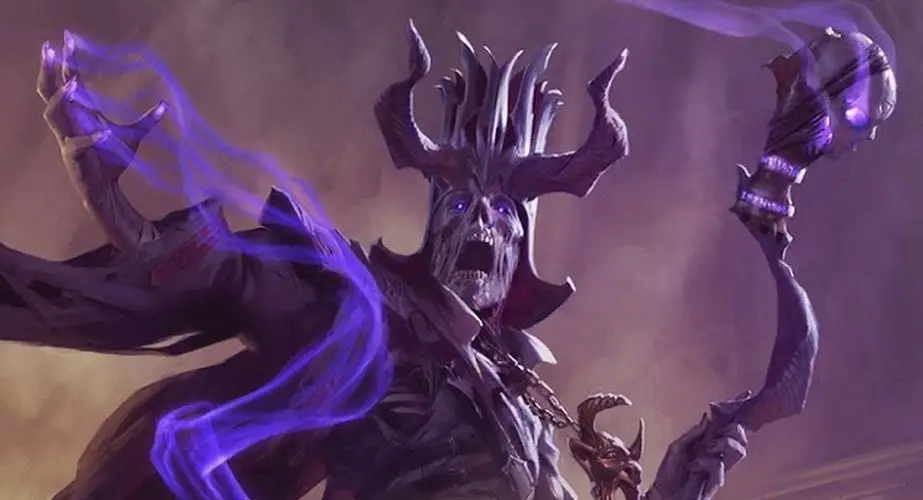
Undying Warlock Features 5e
Now that we’ve established what the Undying Warlock in D&D 5e is and their role in the party, let’s see what makes it tick.
Hold on to your guts! This is going to get… creepy…
Expanded Spell List
As with the other Warlock classes, the Undying Warlock gets an expanded spell list.
When you’re choosing your spells, these are now on the Warlock spell list for you. They’re meant to fit the theme of the Undying Warlock while also more clearly defining what your character does.
Each spell level has at least one good/decent spell option for you. Some of these options are a bit more situational though, so be mindful of your limited spell slots!
| Spell Level | Spells |
| 1 | False Life, Ray of Sickness |
| 2 | Blindness/Deafness, Silence |
| 3 | Feign Death, Speak with Dead |
| 4 | Aura of Life, Death Ward |
| 5 | Contagion, Legend Lore |
The Undying Warlock’s expanded spell list is interesting. There are some decent options here, but a lot of it tends to be a little more niche/situational than most.
False Life isn’t bad and is a solid enough way to gain some temporary hit points. At low levels, you get better mileage with the Fiend Vigor invocation since that doesn’t use your spell resources to cast this as a level 1 spell. At later levels, casting False Life gets you more temporary hit points though.
Related: How Temporary Hit Points Work in D&D 5e
Ray of Sickness can be good enough at lower levels, but it’s not one that you’ll be using much beyond level 5.
It’s a decent option, but your Eldritch Blast cantrip will be more than capable of blasting enemies. As you get options with more utility/debuff potential, you’ll want to drop Ray of Sickness.
Your level 2 spells make for some solid counters. Blindness/Deafness can shut down martial enemies while Silence will infuriate any caster. Both of these are great spell options to have!
The Undying Warlock’s level 3 spells are a bit “meh,” to be honest. Speak With Dead can be useful for gathering information in the right situations and fits the theme of this subclass. However, Feign Death is useless in all but the most extremely niche of situations. You don’t have many spell slots as a Warlock, so it’s probably safest to just forget you even have Feign Death available to you.
Aura of Life and Death Ward are some fantastic spells to protect your allies. Death Ward gives your chosen target some extra insurance against dying. Meanwhile, Aura of Life can pick up unconscious allies while bolstering the party against undead enemies who tend to be fond of dealing necrotic damage and draining characters’ maximum HP.
Contagion requires you to make a melee spell attack, but can absolutely shut down your target. It’s simply vicious! Legend Lore, however, is yet another spell with a very niche application. It’s not that it’s a bad spell, but you don’t have the spell slots to justify all of the “what ifs” like a Wizard could.
Among the Dead (Level 1)
The Undying Warlock’s level 1 ability isn’t too shabby at all!
There are a few parts to this, so we’ll take it bit by bit.
You learn the Spare the Dying cantrip which counts as a warlock cantrip for you.
Sweet! You get a free cantrip that lets you stabilize any allies who get knocked unconscious. This can be useful for buying some time in a dire situation! It also powers the next class feature that you get at level 6!
You also have advantage on saving throws against any disease.
Disease isn’t a particularly common thing in D&D 5e. It’s usually more of a plot device than anything, though you might have to deal with it if you find yourself going against a caster with the Contagion spell.
Still, while these moments are rare, the disease can quickly sink a character’s abilities. You probably won’t get much use out of this, but you’ll be glad you have it if you do need it!
If an undead targets you directly with an attack or a harmful spell, that creature must make a Wisdom saving throw against your spell save DC.
On a failed save, the creature must choose a new target or forfeit targeting someone instead of you, potentially wasting the attack or spell. On a successful save, the creature is immune to this effect for 24 hours.
An undead is also immune to this effect for 24 hours if you target it with an attack or a harmful spell.
This is really the core of the Among the Dead feature.
Most undead don’t exactly have remarkable Wisdom scores, so you’re pretty likely to get value out of this.
If you’re standing against a group of undead, prioritize dropping those that have managed to save against this effect first!
Defy Death (Level 6)
The Undying Warlock’s Defy Death feature takes advantage of the Spare the Dying cantrip. Whether you’re cheating death yourself or snatching an ally away from death’s door, you recover some hit points.
You can regain hit points equal to 1d8 + your Constitution modifier (minimum of 1 hit point) when you succeed on a death saving throw or when you stabilize a creature with Spare the Dying.
Once you use this feature, you can’t use it again until you finish a long rest.
Ok, so this is… something…
The best part of this is that you can get back up with at least some hit points after succeeding on a single death saving throw. This sees you getting right back into the fight with some relative ease!
There are some benefits to the health you gain from using Spare the Dying on an ally. I mean, every little bit helps right?
The problem is that you can only use this once per long rest. You need to be picky about when you use it. Situations where you need to quickly get back on your feet are just simply more dire.
By all means, stabilize your friends if your party’s healer is occupied, but keep this ability in your pocket for when you need it most!
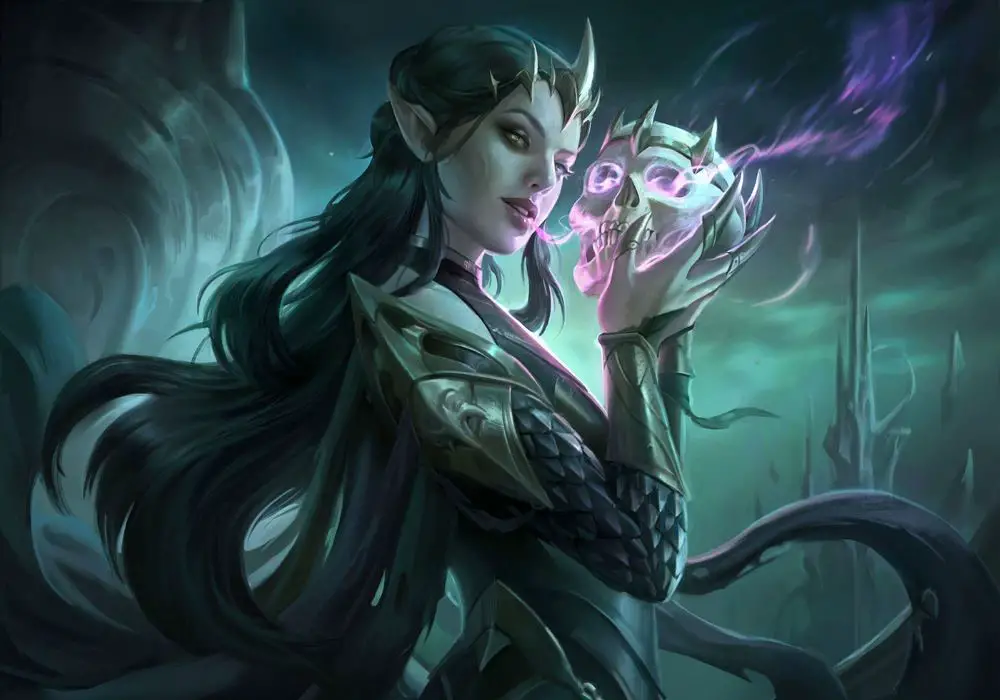
Undying Nature (Level 10)
I love the flavor of the Undying Warlock’s level 10 feature, Undying Nature. However, that’s pretty much all that’s here.
You can hold your breath indefinitely and you don’t require food, water, or sleep. You still require rest to reduce exhaustion and still benefit from finishing short or long rests.
In addition, you age at a slower rate. For every 10 years that pass, your body only ages 1 year. You are immune to being magically aged.
As for the first part of the ability, there’s some use beyond the flavor. You can get a lot of light activity done during rests now that you don’t need to sleep.
Additionally, being able to hold your breath indefinitely can make challenges involving swimming or poison gas incredibly easy for you.
There are some DMs who are particular when it comes to things like food and water, but they’re few and far between in my experience. Most generally assume that you have provisions on you unless things have gone incredibly wrong.
The aging thing is most likely to show up in your campaign’s wrap-up or epilogue. Your adventure probably isn’t going for hundreds of years, after all!
Some dastardly traps or spells might attempt to magically age a character in which case you’re covered. However, these tend to be pretty rare.
There’s a lot of fun flavor to this feature, but it admittedly doesn’t have a lot of “meat” to it.
Also Check Out: The Complete Warlock Class Guide for D&D 5e!
Indestructible Life (Level 14)
At last, we come to the Undying Warlock’s capstone ability in D&D 5e: Indestructible Life.
When you hit level 14, your patron gives you a taste of the Undying’s power. You’ve now got a self-healing ability that lets you quickly recover hit points and even reattach severed limbs!
On your turn, you can use a bonus action to regain hit points equal to 1d8 + your Warlock level. Additionally, if you put a severed part of yours back in place when you use this feature, the part reattaches.
Once you use this feature, you can’t use it against until you finish a short or long rest.
It’s a decent heal that only takes a bonus action. At level 20, you’re effectively healing up to 28 hit points for free. Plus, if your game includes optional rules for losing limbs, you’ve got a nifty way to overcome that challenge!
All things considered, recovering on a short rest isn’t bad either. You’re already going to be wanting to take short rests to recover your spell slots, so this isn’t too out of the way.
Unfortunately, this just isn’t as exciting as the capstones for other Warlock options.
While the Great Old One Warlocks are creating thralls and the Fiend Warlocks are dealing some truly crazy damage to their unfortunate enemy, you’re reattaching your finger.
Ok, maybe I’m downplaying that a little bit, but not much!
Yes, in a pinch it can be very helpful to have some HP recovery as a bonus action. But a self-heal that’s on par with a level 2 or 3 healing spell just simply doesn’t make for an exciting capstone in my opinion.

Pact Boons for Undying Warlocks in D&D 5e
For Warlocks, the Pact Boon that you choose is meant to really carve out your area of specialization.
You get some abilities from the Pact Boon that you choose, but, most importantly, your choice determines what kind of invocations you can take.
As I mentioned when talking about the Undying Warlock’s role in the party, this water gets a bit murky. There’s not really a clear specialization for you to go with. It’s really about your personal preference and what your party needs.
We’ll look over the Pact Boons available to you and how they might work with an Undying Warlock.
Related: I’d also recommend checking out my in-depth guide to Pact Boons!
Pact of the Blade
I don’t think Pact of the Blade is necessarily a terrible choice for the Undying Warlock. You’re still on the squishier side, but you open up some opportunities by being on the party’s frontlines.
Spare the Dying is an important cantrip for the Undying Warlock and Contagion is one of their best spells. Both of these require being able to touch the target, so being a bit hardier and on the front lines can make this easier for you.
If you do take the Pact of the Blade, you’ll want to make sure you have a high Constitution score and get the best armor you can. You’re tough to kill, but that doesn’t mean that you are invincible!
If you take the Pact of the Blade, focus on using spells that debuff or lockdown enemies to open up opportunities for you and your party to charge!
Pact of the Chain
Gaining a familiar with the Pact of the Chain is probably the Undying Warlock’s best option.
Not only are familiars useful for scouting, but your little friend can be used to deliver your touch spells like Spare the Dying or Contagion.
If you take the Gift of the Ever-Living Ones invocation (exclusive to Pact of the Chain Warlocks), you can get the most value out of any healing you receive.
Of the familiar options available to you, the Imp is going to be your safest bet. It’s arguably the best of the lot as it is and fits your character’s theme reasonably well.
Pact of the Talisman
The Pact of the Talisman is a great way to offer some extra support to your allies. I originally wasn’t sold on this Pact, but it really grew on me.
However, the biggest issue is that the Undying Warlock still needs a clearly defined role. The Pact of the Talisman offers some great passive support to the party, but it doesn’t really do anything to help the Undying Warlock stand out.
This isn’t a bad pact. Your party will appreciate the extra bonuses you give them.
But there just isn’t really anything here that helps carve out who your character is and what they actually do.
I’d pass on the Pact of the Talisman if I were playing an Undying Warlock.
Pact of the Tome
The Pact of the Tome focuses in on your spellcasting abilities. You gain three extra cantrips and the Book of Ancient Secrets invocation makes you a better ritual caster.
For your cantrips, you aren’t going to do much better than Eldritch Blast when it comes to damage. Focus on options that provide utility or buff your allies like Guidance, Message, or Light.
Also, don’t bother taking the Aspect of the Moon invocation since that’s already covered by your Undying Nature feature.
Once you hit level 9, it’s not a bad idea to take the Gift of the Protectors invocation from Tasha’s Cauldron of Everything. This invocation functions similarly to the Death Ward spell and fits this subclass’s theme well.
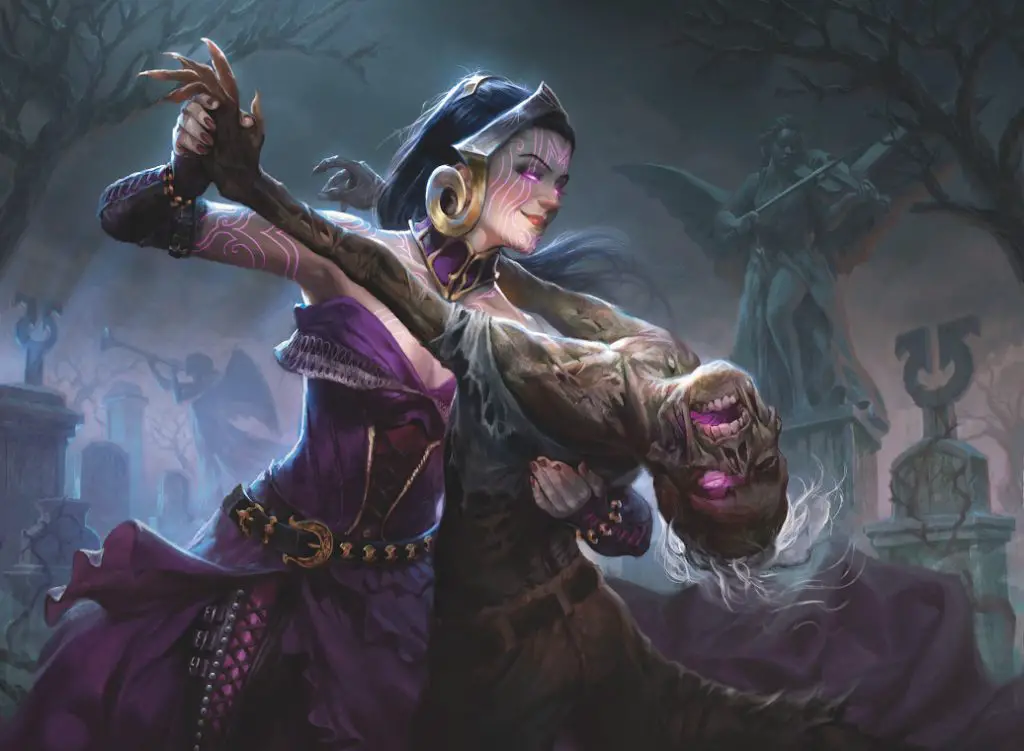
Connections
In connecting your character to the world and story, the first big question becomes “why did they make this pact?”
What has prompted your character to sacrifice so much on their quest for eternal life? Do they fear death or are they convinced that they can buy more time to finish some grand project?
I could see a pact like this being made in a way similar to Davy Jones in the Pirates of the Caribbean movies. On the brink of the end of their life, a character is approached by an entity that offers an extension of their life in exchange for service.
As to what would prompt the character to join the party, there’s no limit to reasons why.
Perhaps your patron is simply looking to see how you brave the dangers of the adventure ahead as a test for more powers to come?
Of course, it’s also possible that your patron has other (grander) plans. Considering that you’ve likely made this deal with a lich of some sort, it can be hard to know for sure!
My Ultimate Guide to Warlock Patrons in 5e will give you more ideas for how your relationship with your patron might go!
Is the Undying Warlock Good?
To be blunt: no.
The Undying Warlock is entirely lackluster in everything but its theme. I’m all for playing the character that you want to play first and looking at mechanics second, but there has to be something there!
Honestly, the Undying Warlock is just so niche that I can’t think of a situation where I would recommend it. It just doesn’t stand out versus the other Warlock Patron options available to you.
At its most useful, the Undying Warlock is just an “ok” option.
If you like the theme of a Warlock that focuses on the undead, you’ll be much happier with the Undead Warlock from Van Richten’s Guide to Ravenloft.
Update: You can check out my guide to the Undead Warlock here!
Conclusion – Undying Warlock in D&D 5e Guide
Well, that wraps up this guide to the Undying Warlock in D&D 5e!
This is a subclass that has a lot of potential but just doesn’t quite execute that well.
Of course, it’s still perfectly possible to make an Undying Warlock and genuinely enjoy playing the character. I just feel like the mechanics really work against this particular option.
If you’ve played an Undying Warlock before and enjoyed it, tell me about it in the comments! I’d love to hear an opinion different than my own!
Speaking of opinions, you can find my full ranking of every Warlock subclass in 5e by clicking here!
Want to keep up to date on all the latest D&D news, tips, tricks, and more? Sign up for my newsletter below!
You can also follow me on Facebook and Twitter.
If you found this article helpful and want to support the site, you can buy me a coffee here! (It’s not expected, but very appreciated!)



